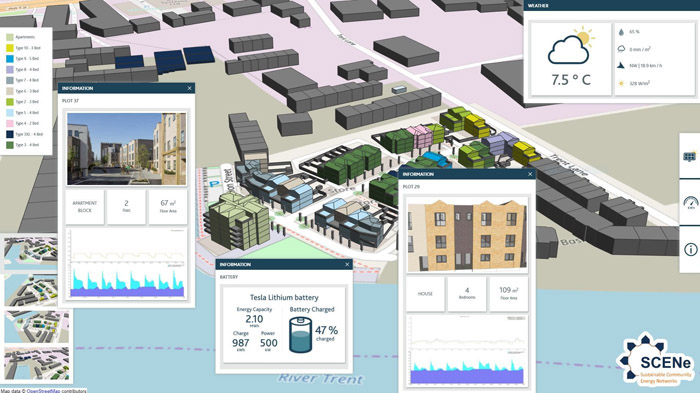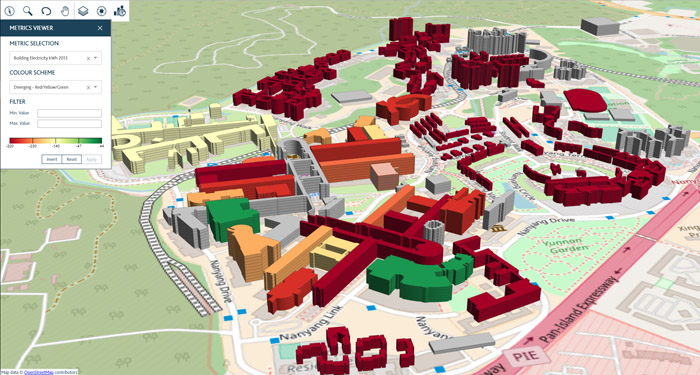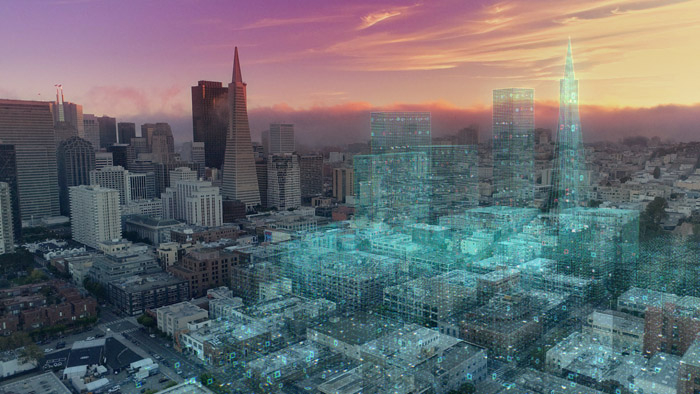As the world strives to meet climate change targets, the role of digital twins is set to become increasingly important, writes Don McLean, CEO & founder, IES
The digital twin – a digital reproduction of a physical entity, linked by sensors – will become increasingly important as we attempt to improve the energy efficiency of our building stock in order to meet climate change targets. The UK Government’s Industrial Strategy Clean Growth Grand Challenge (tinyurl.com/UKgreener) recognises that the UK is already playing a leading role in providing the technologies, innovations, goods and services for a Clean Growth future, but within the construction industry we can do more.
Our buildings have changed significantly over recent years, but the way we design, handover and operate them unfortunately has not. The building industry therefore needs to catch up with other industries in their use of digital technology and data.
The good news is this is beginning to happen. There are many pioneering projects, both within the UK and globally, that are pushing the boundaries in the use of digital twin technology to create better performing, more sustainable buildings and communities.
For example, at IES we have used our latest environmental digital twin technology – the Intelligent Communities Lifecycle (ICL) – to discover 12% energy savings for an existing net-zero energy building in the tropics. That same technology has also been used to create a Virtual Campus Energy Model to support the Dundalk institute of Technology’s Net Zero Energy Campus aspiration, providing analysis and understanding of the dynamics within their distributed energy network.
Undoubtedly, digital twin technology and other technological advances have the potential to revolutionise how we manage, interact and operate the buildings in our local communities, campuses and cities. However, this technology isn’t yet being utilised to its full potential.
Building simulation software has been around for decades and architects, engineers, construction companies and city planners have long used building information modelling software to help them design, construct and operate buildings.
However, with the addition of real-time sensors, big data and cloud computing, it’s now possible to create digital twins of entire communities and simulate how things will look and interact in a huge range of different scenarios. For example: “What opportunity is there to use renewables?” and “What savings could be achieved through a community-wide solution, such as a district heating system?”
Throughout development of the ICL, we’ve been involved in many ground-breaking pilot projects and rigorous testing to bring the technology to the construction industry. Some of the most innovative pilot projects are Project SCENe in Nottingham, UK and the Nanyang Technological University (NTU) EcoCampus in Singapore.
Project SCENe: Trent Basin
Trent Basin is a low-energy community located within Nottingham Waterside. The development is supported by the Energy Research Accelerator and the Innovate UK funded Project SCENe, a research project led by the University of Nottingham and ATKearney. It is home to a ground-breaking energy project, where energy is being stored on site in the largest community energy battery in Europe.

IES used digital twin technology to create an interactive platform that enables the Trent Basin community to visualise its energy data in real-time. The platform provides information on renewable energy generation and storage, alongside energy consumption data, and general information about the homes.
\The aim of the 3D Community Interaction Model was to provide a visual tool that promotes public engagement in the community energy scheme and communicates the results of this low energy housing development. It integrates real-time data of the energy used, generated and stored at the Trent Basin, allows residents to compare household-level data with the community average and see how much energy the project is producing and selling to the grid.
The project makes use of cutting-edge smart home and Internet of Things technologies to better understand and predict energy use and behaviour. This provides residents with information they need to make informed decisions and to help optimise the operation of the community energy scheme.
Whether using the online platform or the 147-Inch Touch Screen, residents can move virtually around the real-life site, see how much energy is being generated, assess the charging state of the battery in real-time and compare this with the other real-time data available such as the weather.
The aim is to make energy easy and compelling to understand, to help citizens realise its potential as an essential component for wellbeing and resilience. The touch screen is part of a suite of methods to support this, including voice-activated helpers, bespoke and mainstream social media platforms, a customised smart metering app compatible on any smart device, and community-based activities.
NTU EcoCampus, Singapore
IES delivered a 3D masterplanning and visualisation model, virtual testing and building performance optimisation for Nanyang Technological University (NTU)’s flagship EcoCampus. Delivered in two phases, the project used digital twin technology to provide high-level visualisation and analysis of testbed energy reduction technologies on site, before delving into detailed simulation and calibrated modelling of 21 campus buildings.
NTU firstly wanted to understand, at campus level, which testbed solutions were performing the best, and identify the optimum scale and location for their deployment.
The EcoCampus initiative covers the entire NTU 200-hectare campus and adjoining 50-hectare JTC Corporation CleanTech Business Park. There are over 200 buildings on site with a 1.1million m² floor area.
Phase 1 of the project concentrated on creating a masterplanning model of the EcoCampus, complete with energy signatures for each building on the campus.

The model was accurate to 91% for total energy consumption and 97% for chiller energy consumption. A corresponding online cloud based Campus Information Model for communication and engagement with campus staff and students was also created and connected to the masterplanning model for automatic updates.
The masterplanning model was used as a baseline to simulate and analyse testbed technologies ranging from improved thermal performance of the building envelope, to lighting sensors, chiller optimisation and smart plugs that turn equipment off out of hours. These measures combined reduced energy consumption across the campus by 10%, saving $3.9M and 8.2kt of carbon.
In Phase 2, the implementation stage, the best solutions from the Phase 1 ‘testbed’ were chosen and applied.
Using real operational data from utilities and NTU’s Building Management Systems (BMS), IES identified opportunities to achieve optimal performance in existing buildings across the campus, using its innovative Ci2 (Collect, Investigate, Compare, Invest) process.

During the ‘Collect’ and ‘Investigate’ stage, building information was gathered and operational data imported into IES’ operational data management and analysis tool, iSCAN, to investigate issues/faults across a selection of 21 buildings on the NTU campus.
Virtual models were created in the IES Virtual Environment (VE) for each of the buildings and calibrated using the operational data. These models established an accurate baseline for the existing buildings in operation, enabling IES to ‘Compare’ and determine potential savings for a range of technologies in the ‘Invest’ stage.
The results demonstrated that the technologies simulated could achieve 31% average energy savings and a total cost saving of approximately $4.7million.
Conclusion
Project examples like these prove that digital twin technology is already making a significant impact in reducing the built environment’s carbon footprint, and these numbers are continually rising as more and more building professionals understand the social, environmental and economic benefits of using this technology and integrated performance analysis tools. We should be proud of what we’ve achieved so far. However, with recent climate reports issuing stark warnings on the urgency to act on climate change (ipcc.ch/sr15), the call to action is clear. Let’s evolve in our use of digital technologies and make a significant impact.
What is a digital twin?
The digital twin – a digital reproduction of a physical entity, linked by sensors – is a new, exciting tech development that is growing in momentum, not only in construction, but across all industries.
In the built environment, Digital twins act as a live digital model of a physical asset and can function as essential problem-solvers, providing decision support information needed to improve asset performance, influence future building design and ultimately reduce risk.
If you enjoyed this article, subscribe to our email newsletter or print / PDF magazine for FREE






